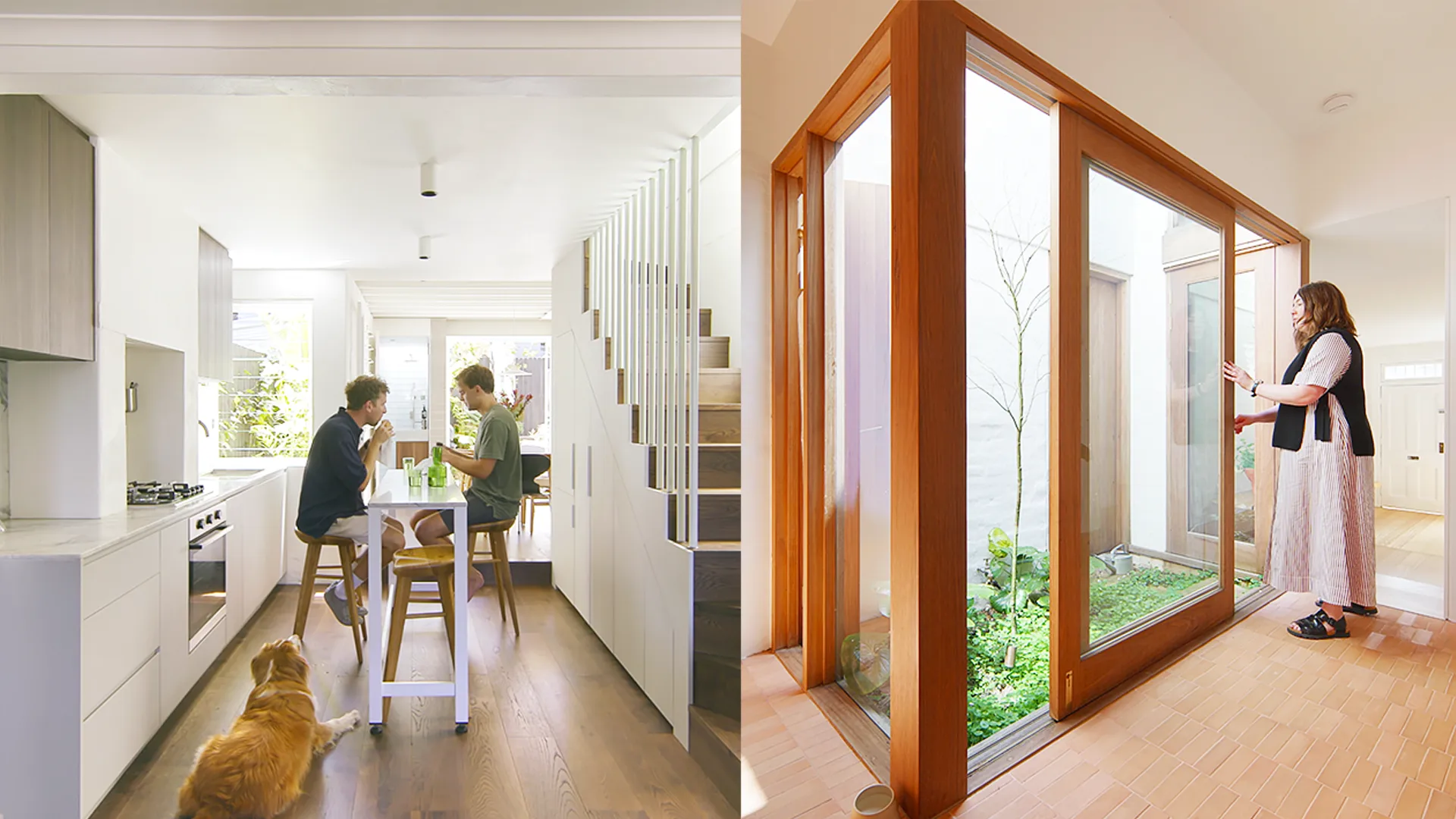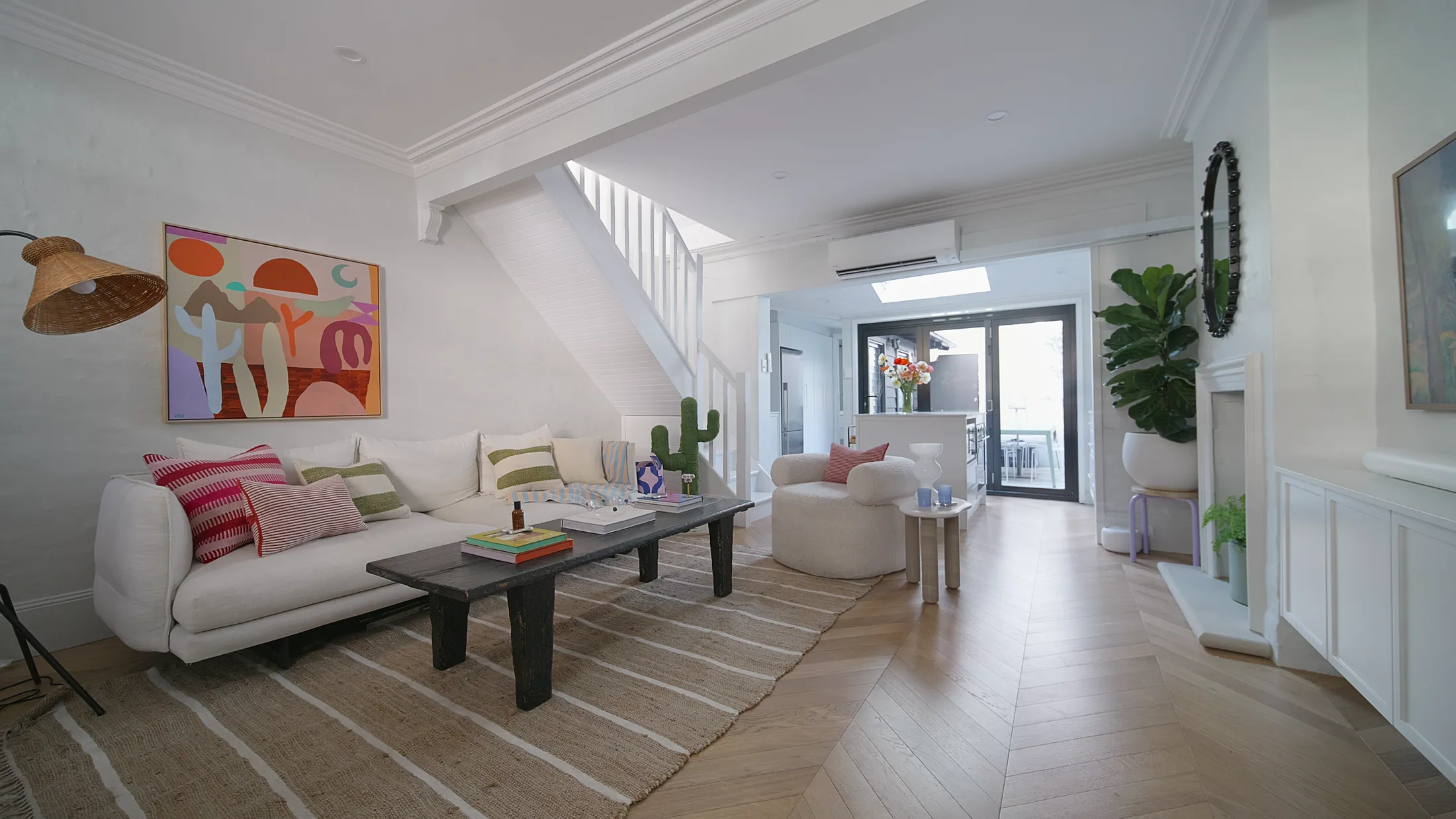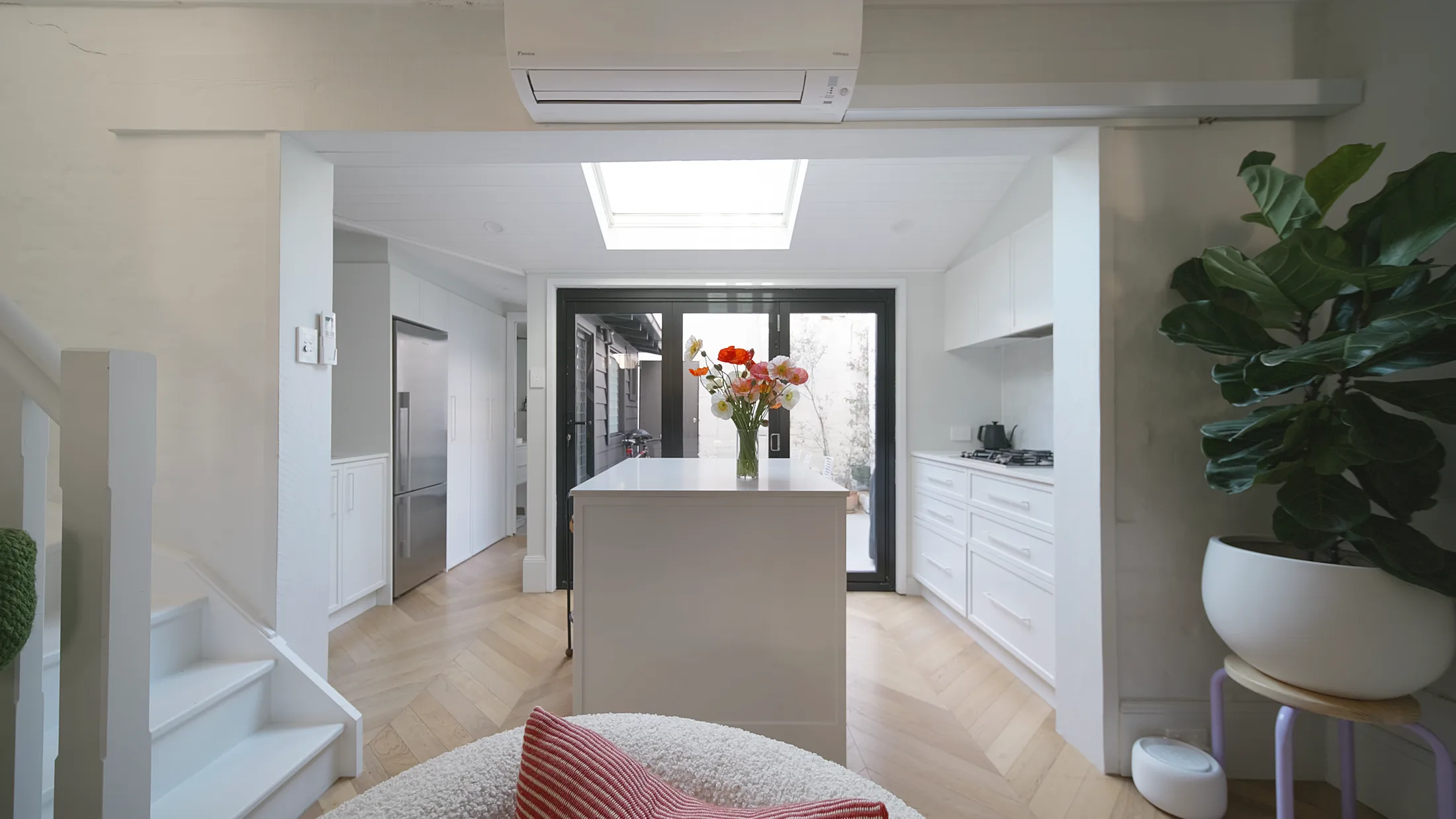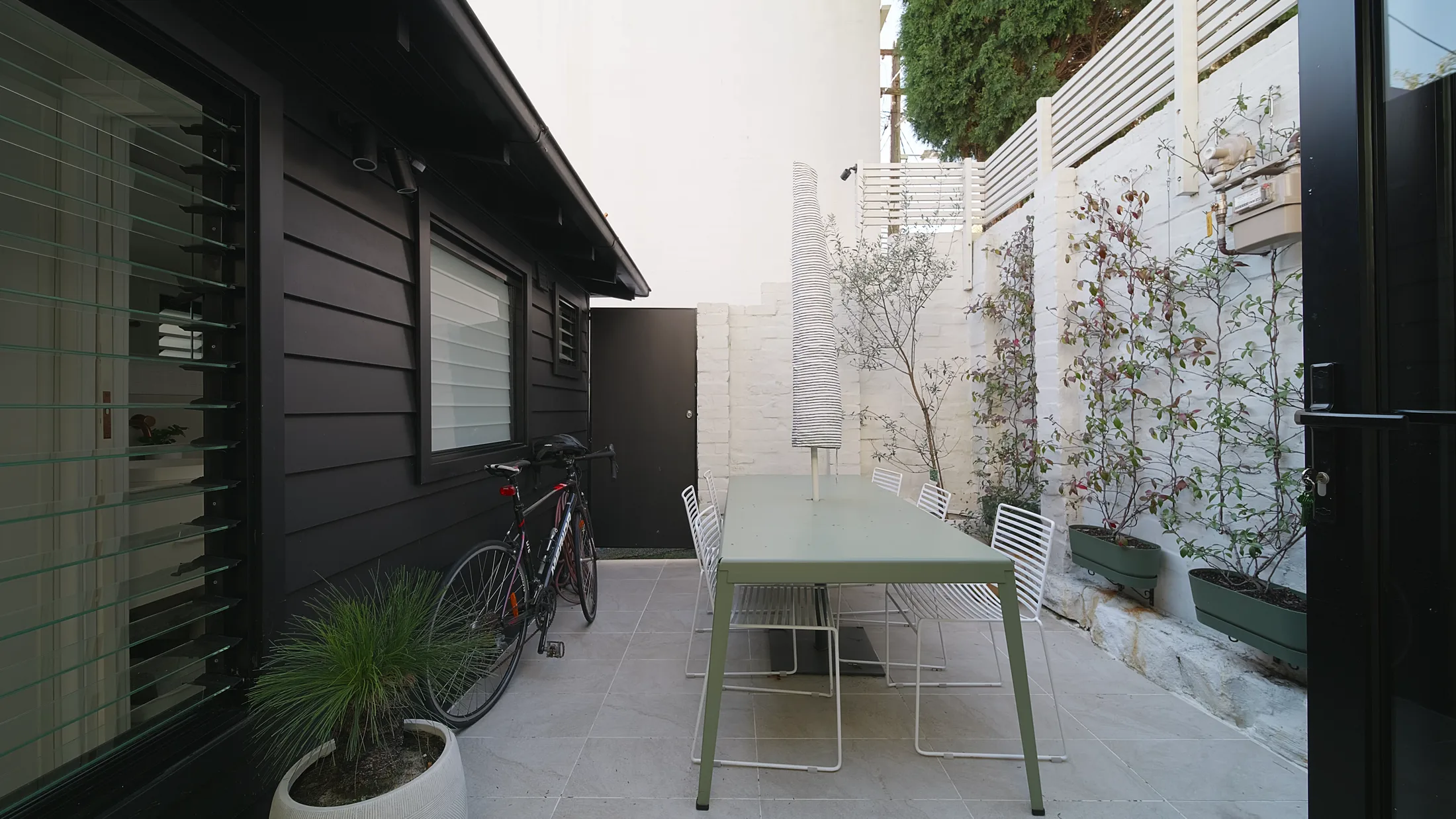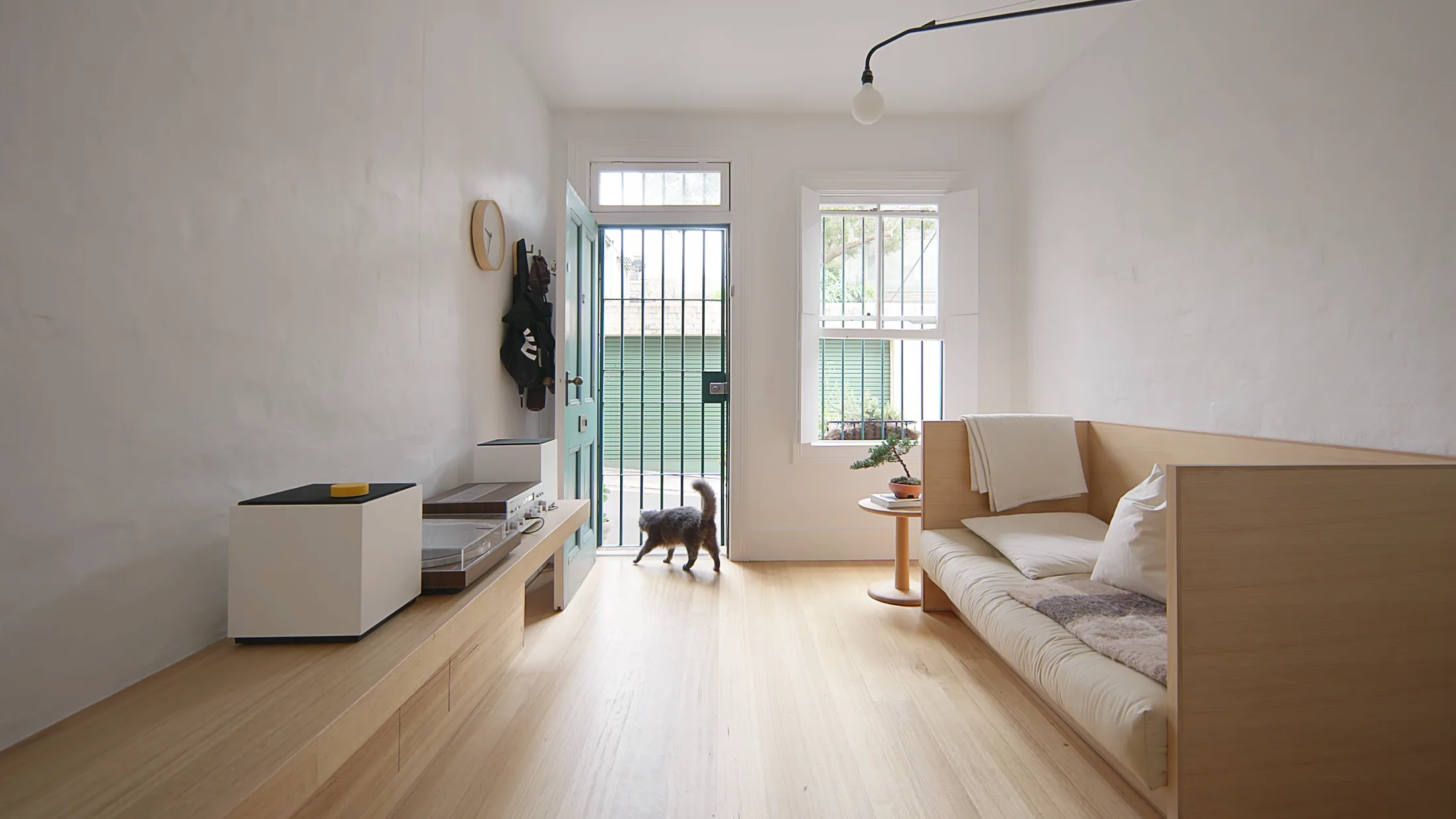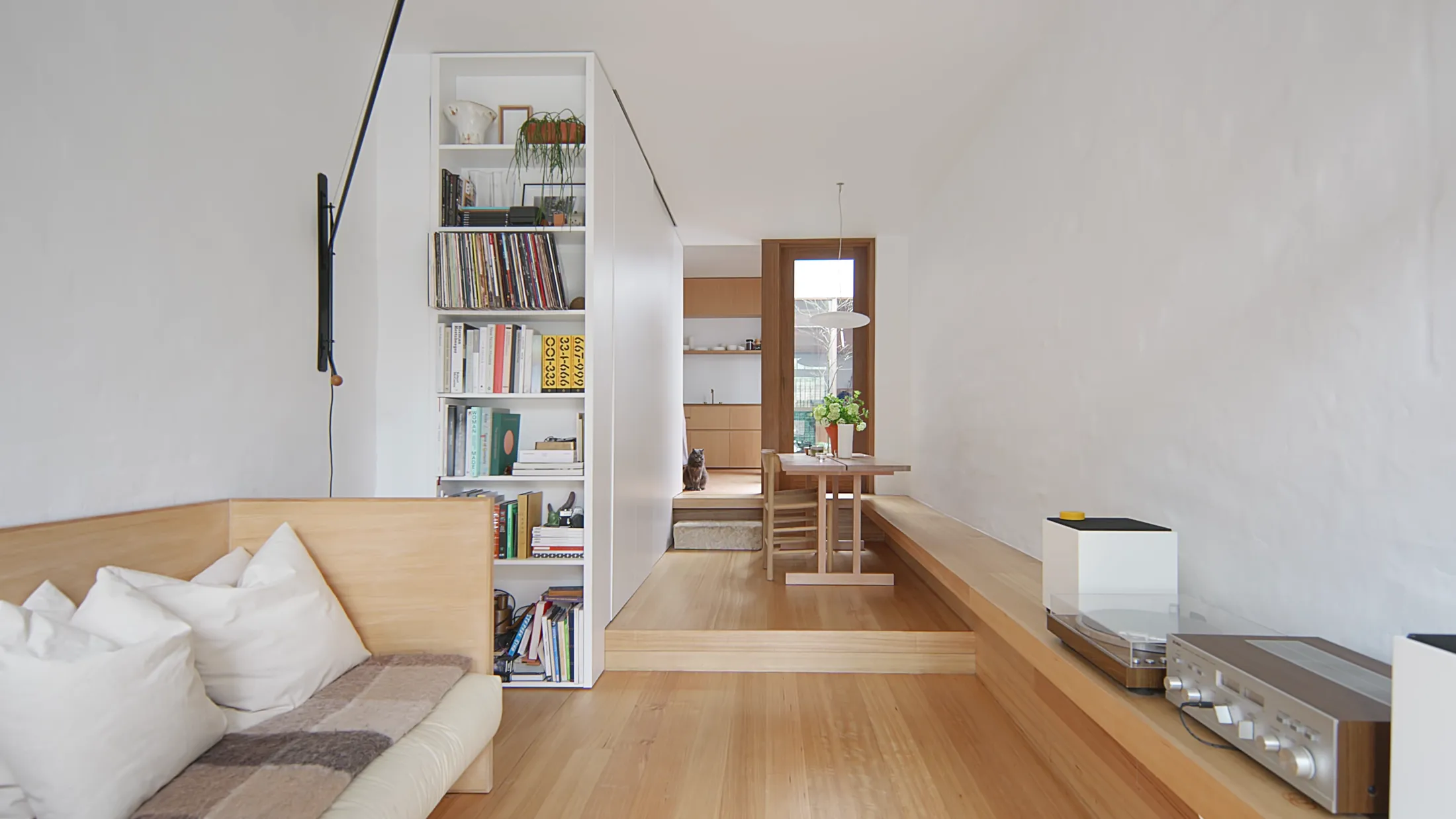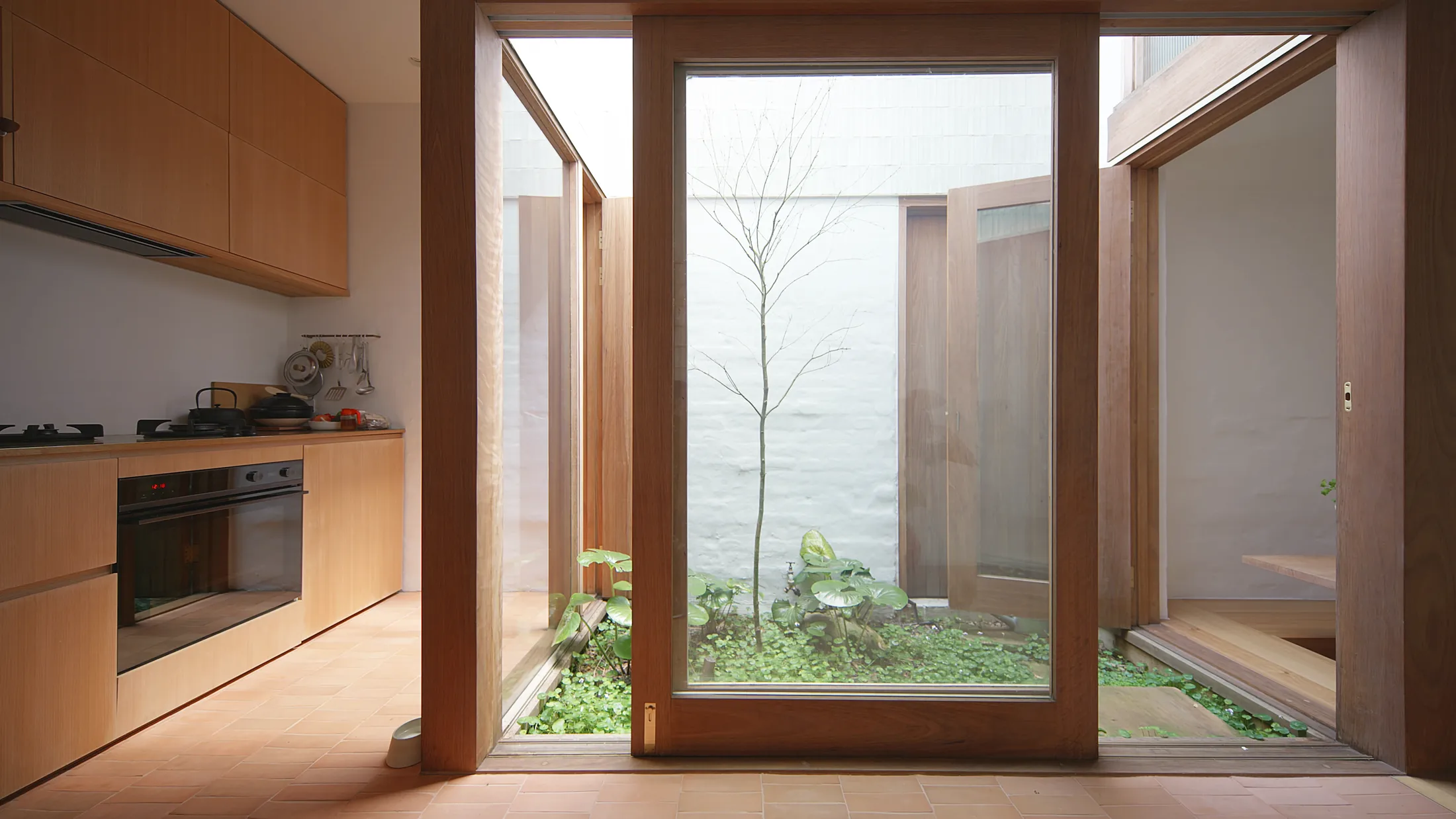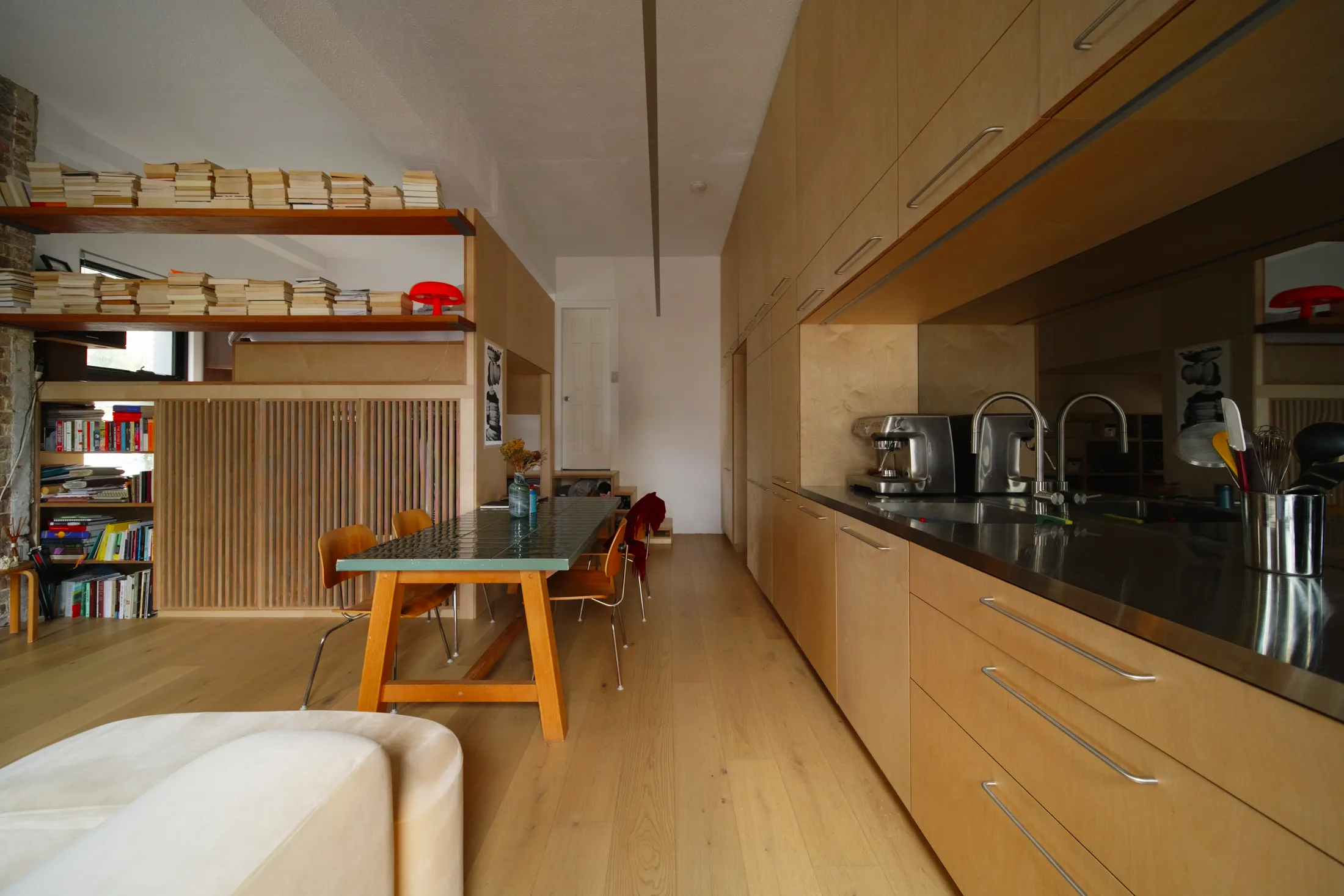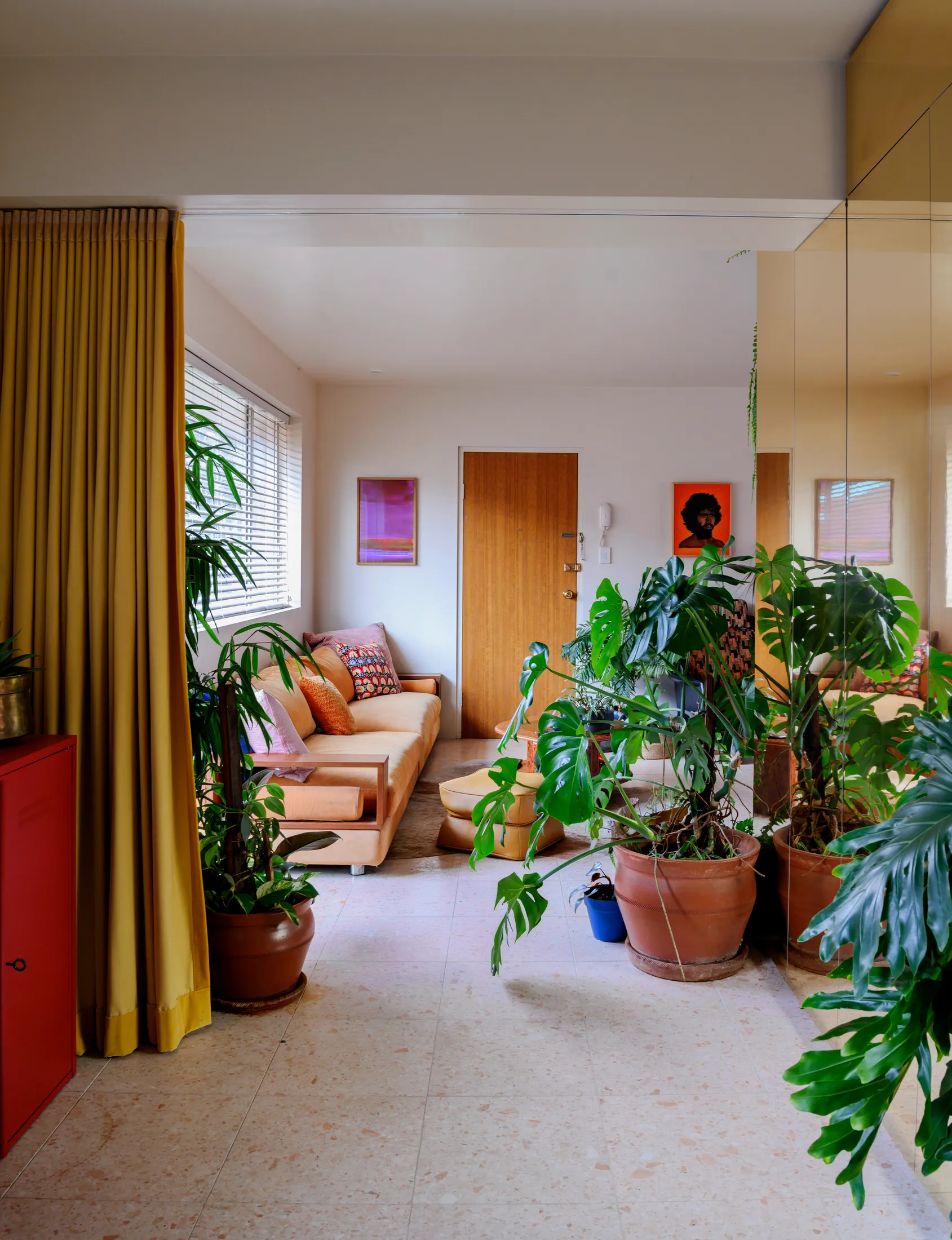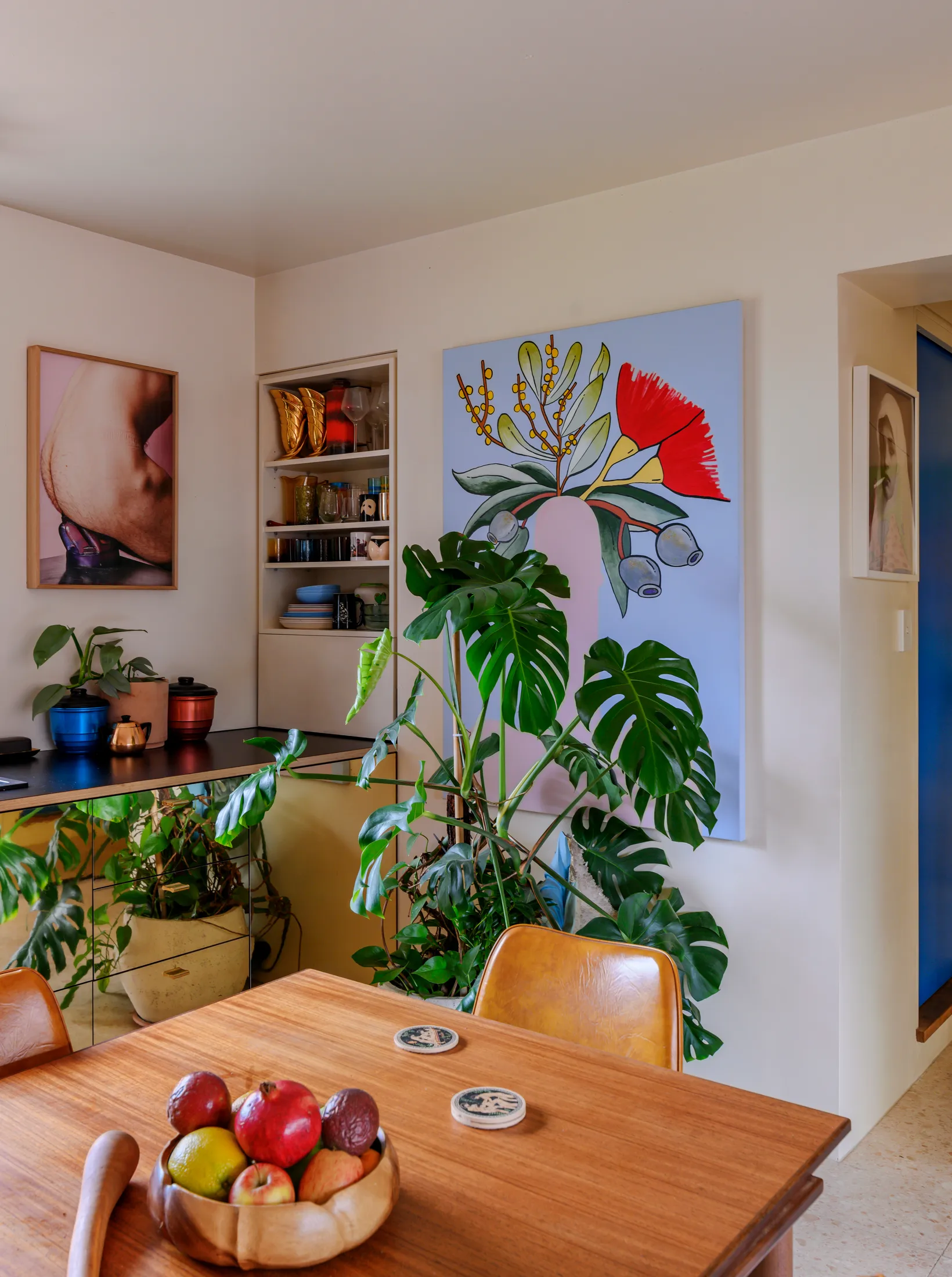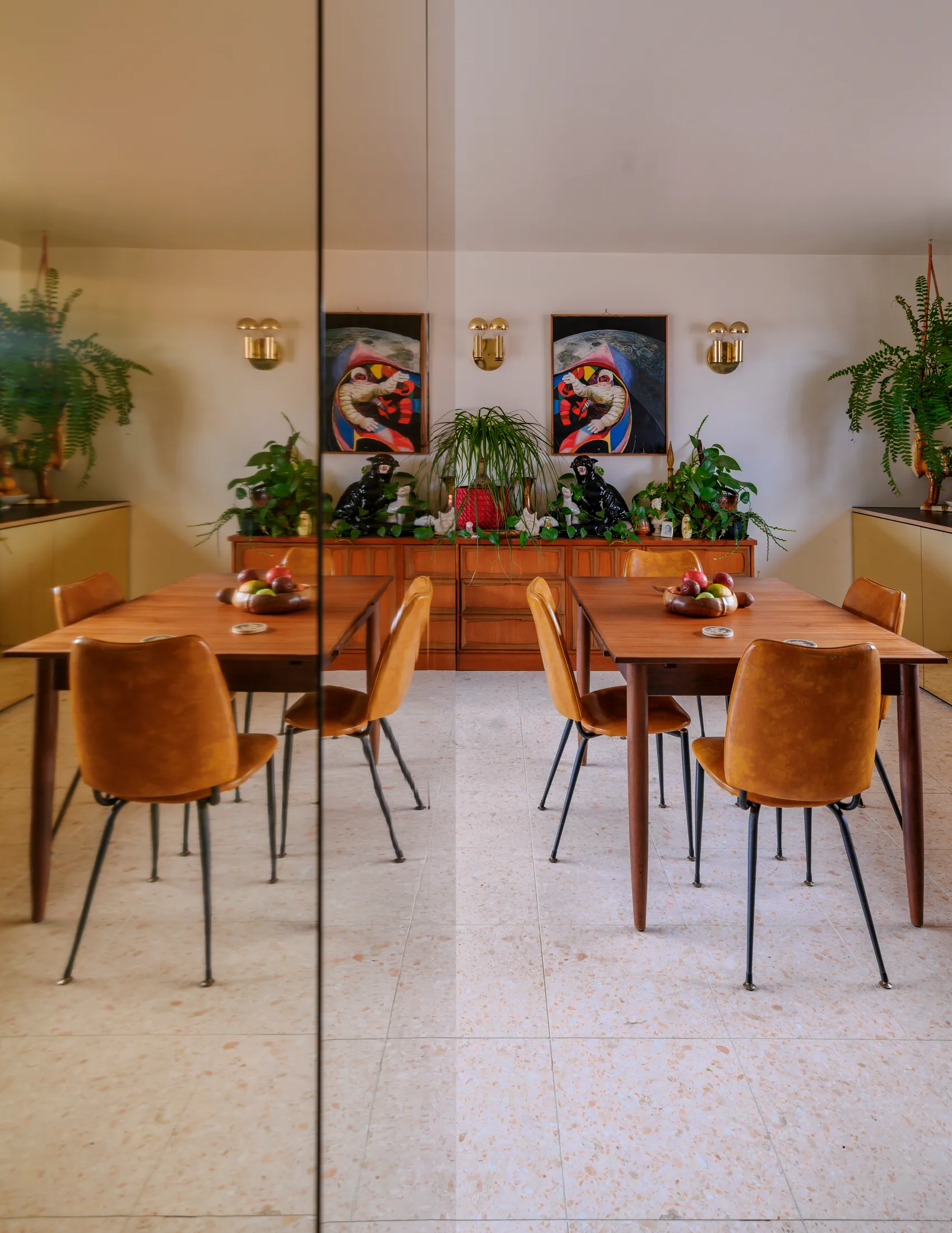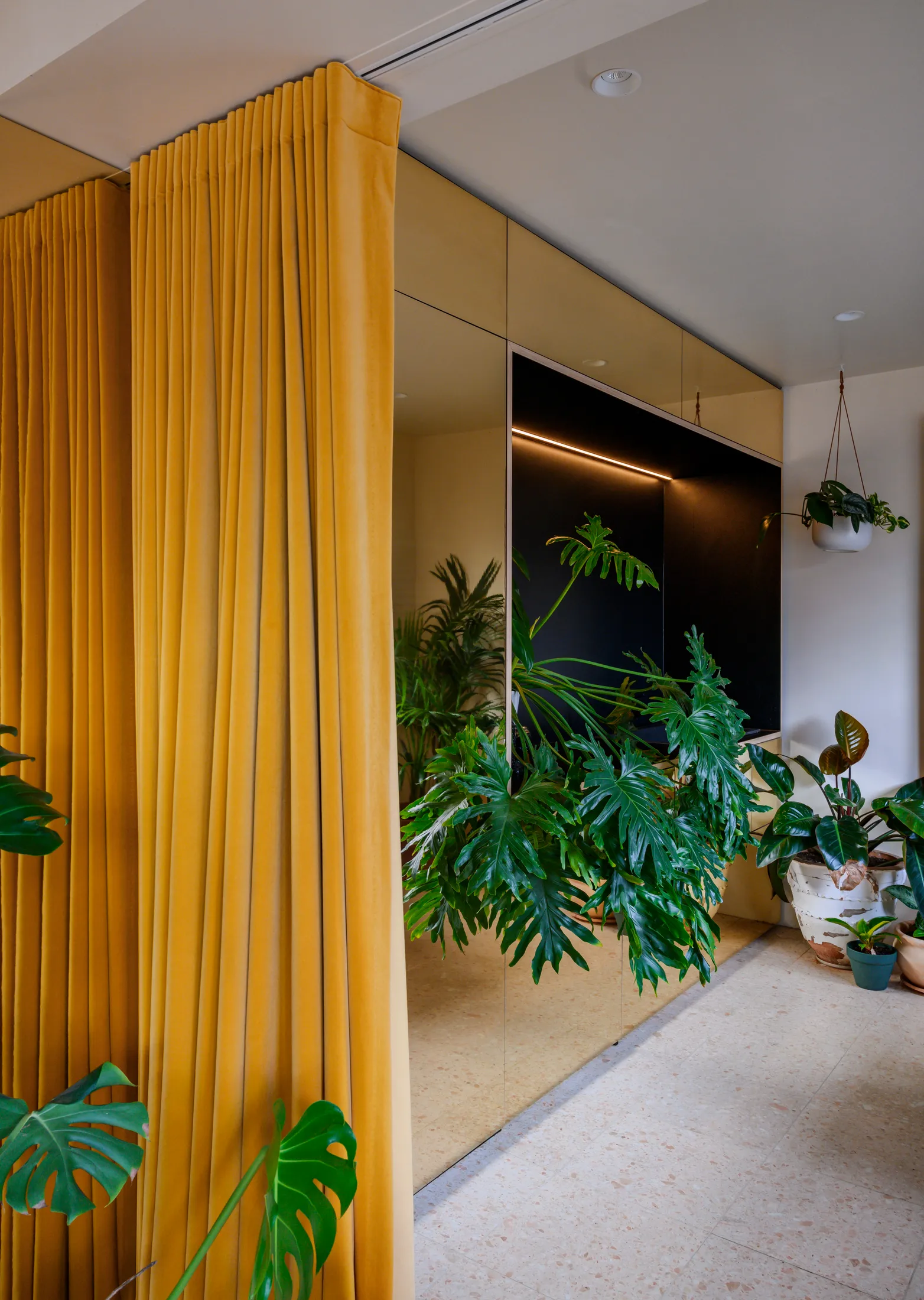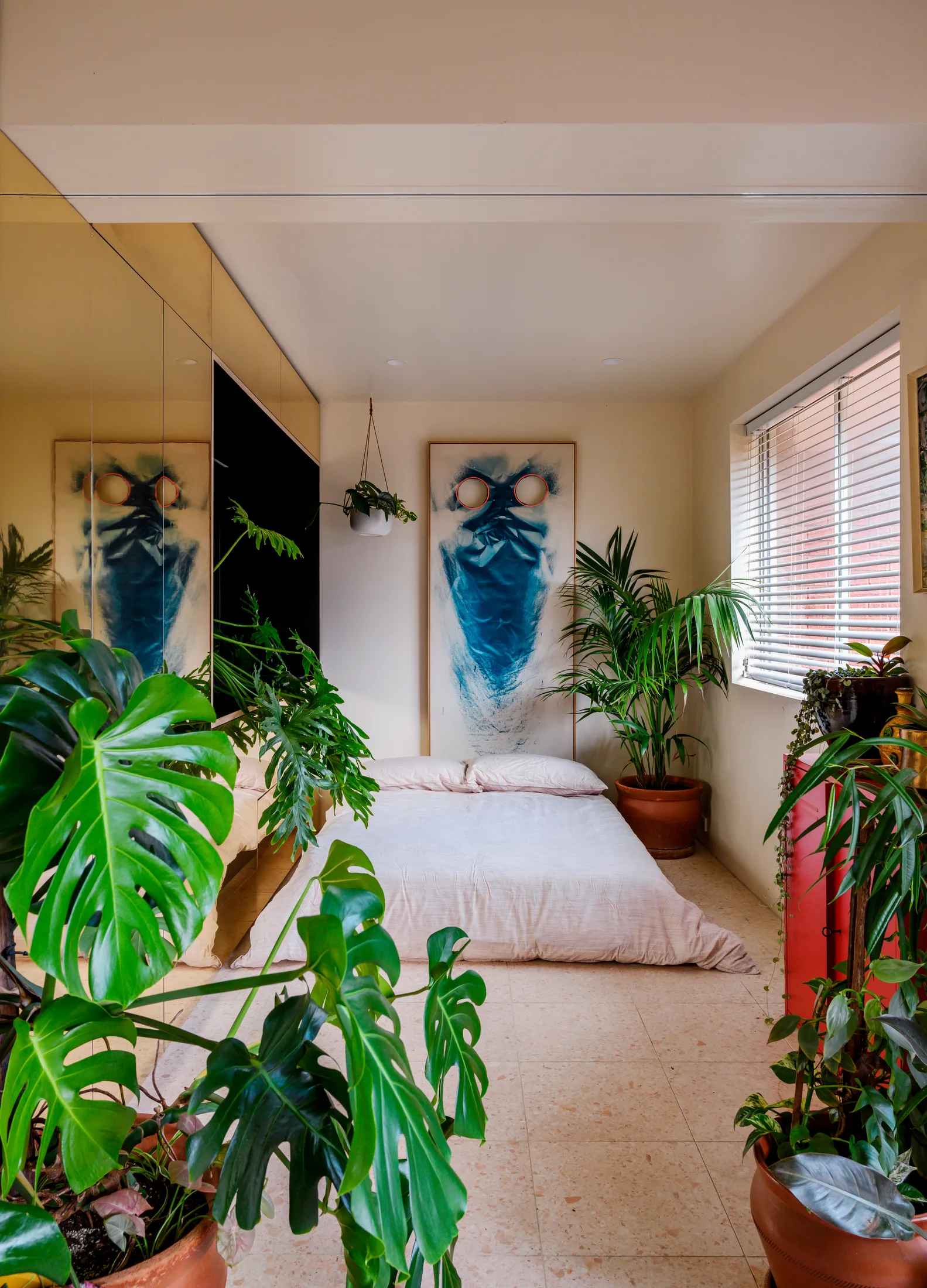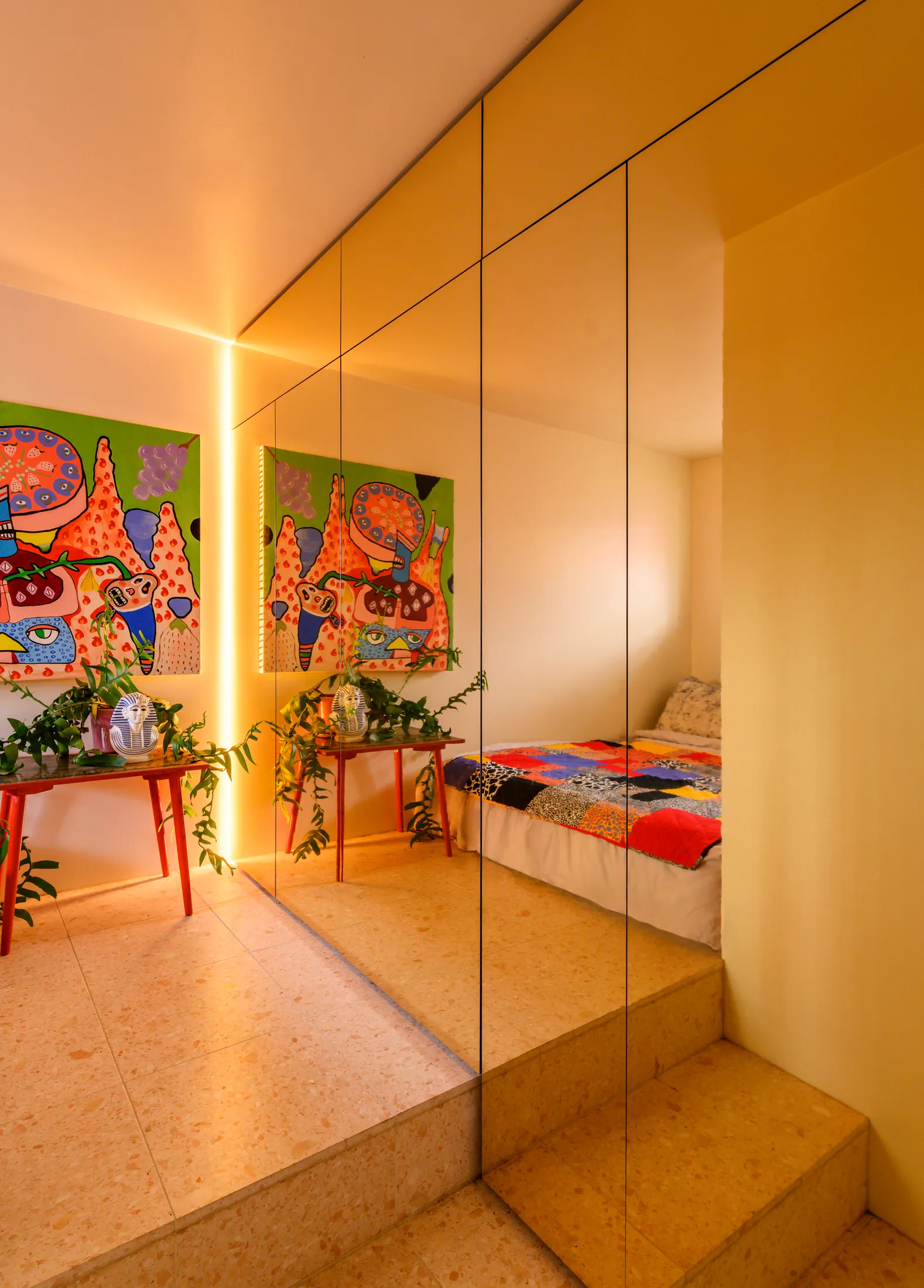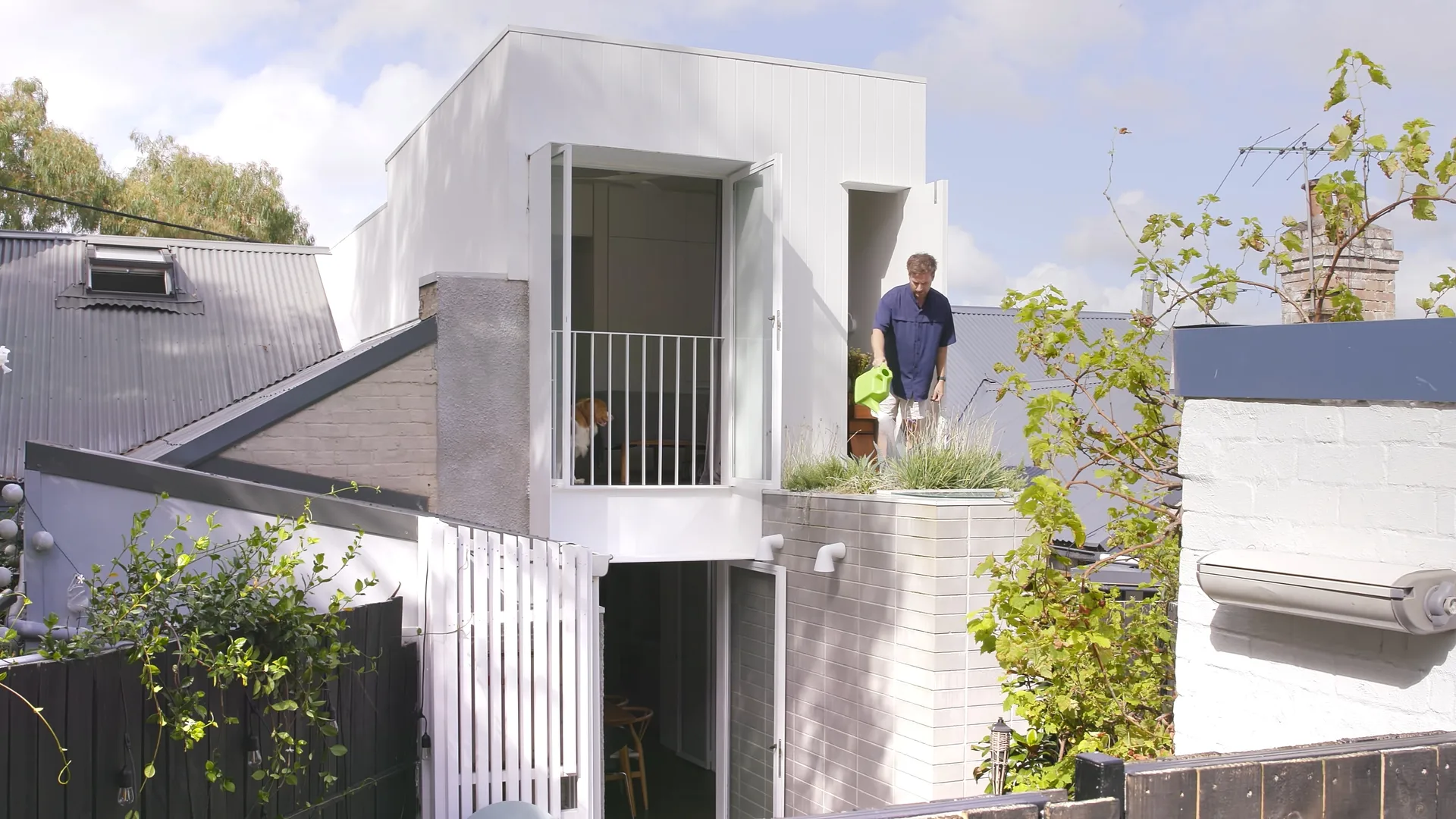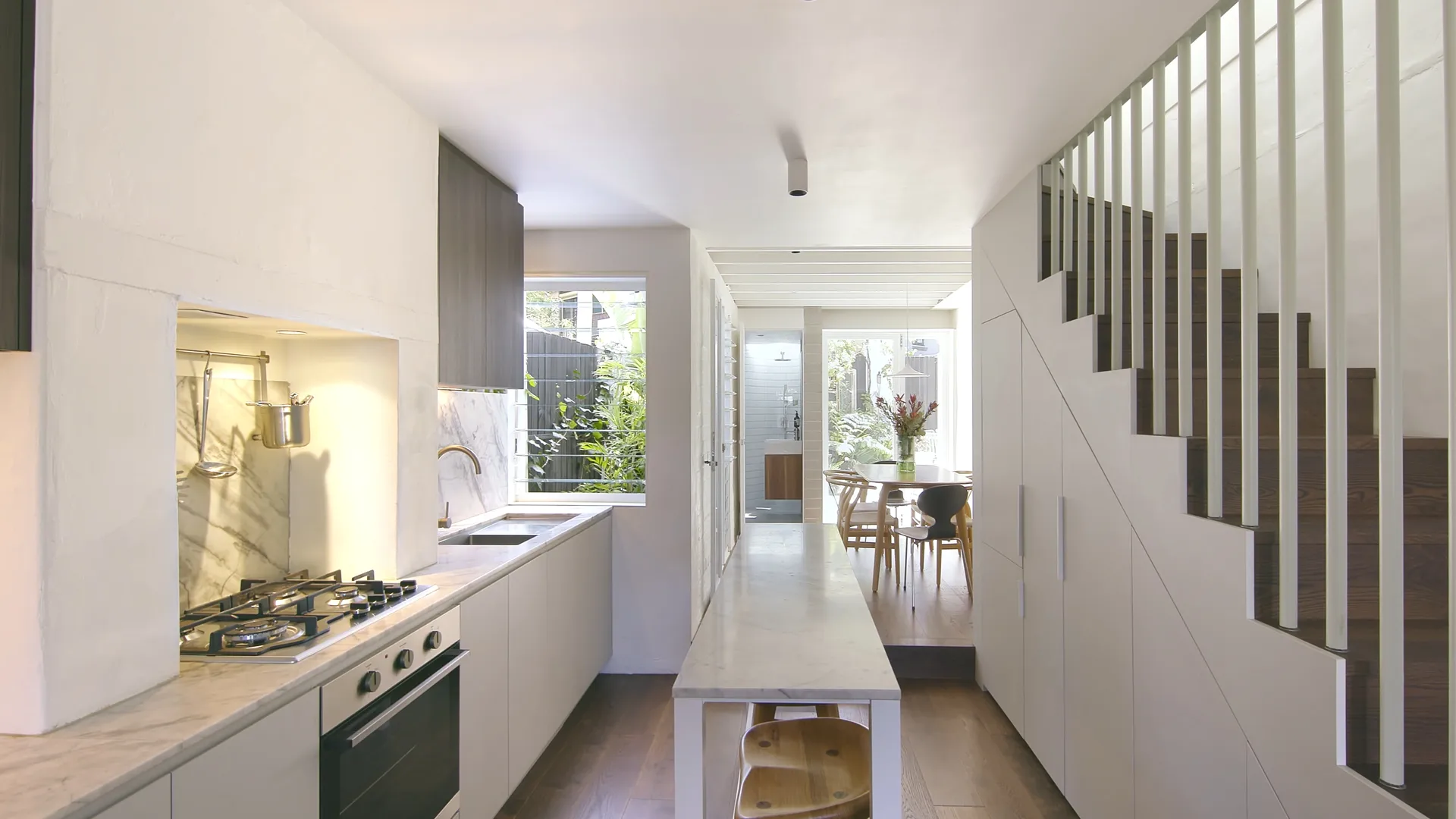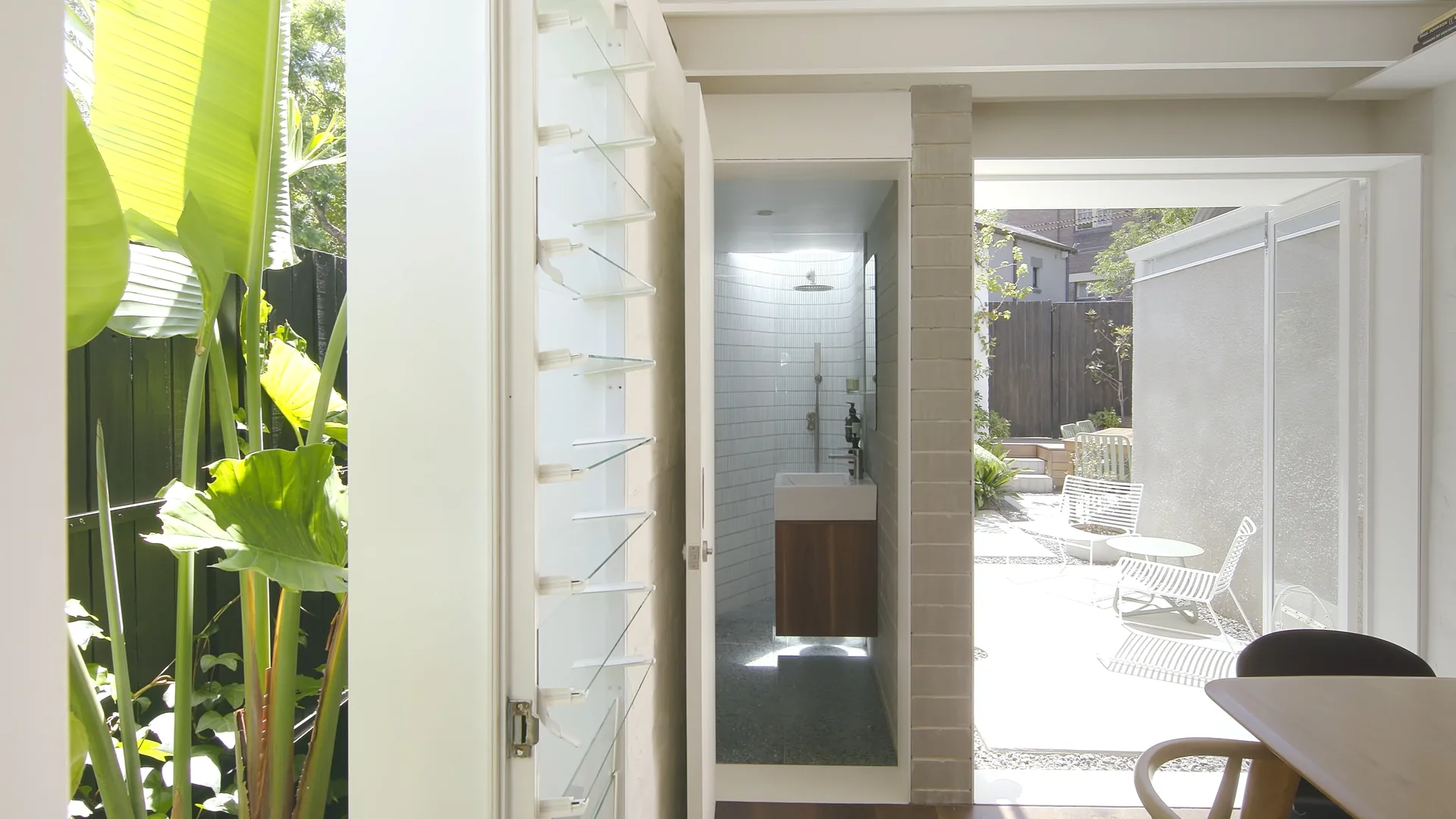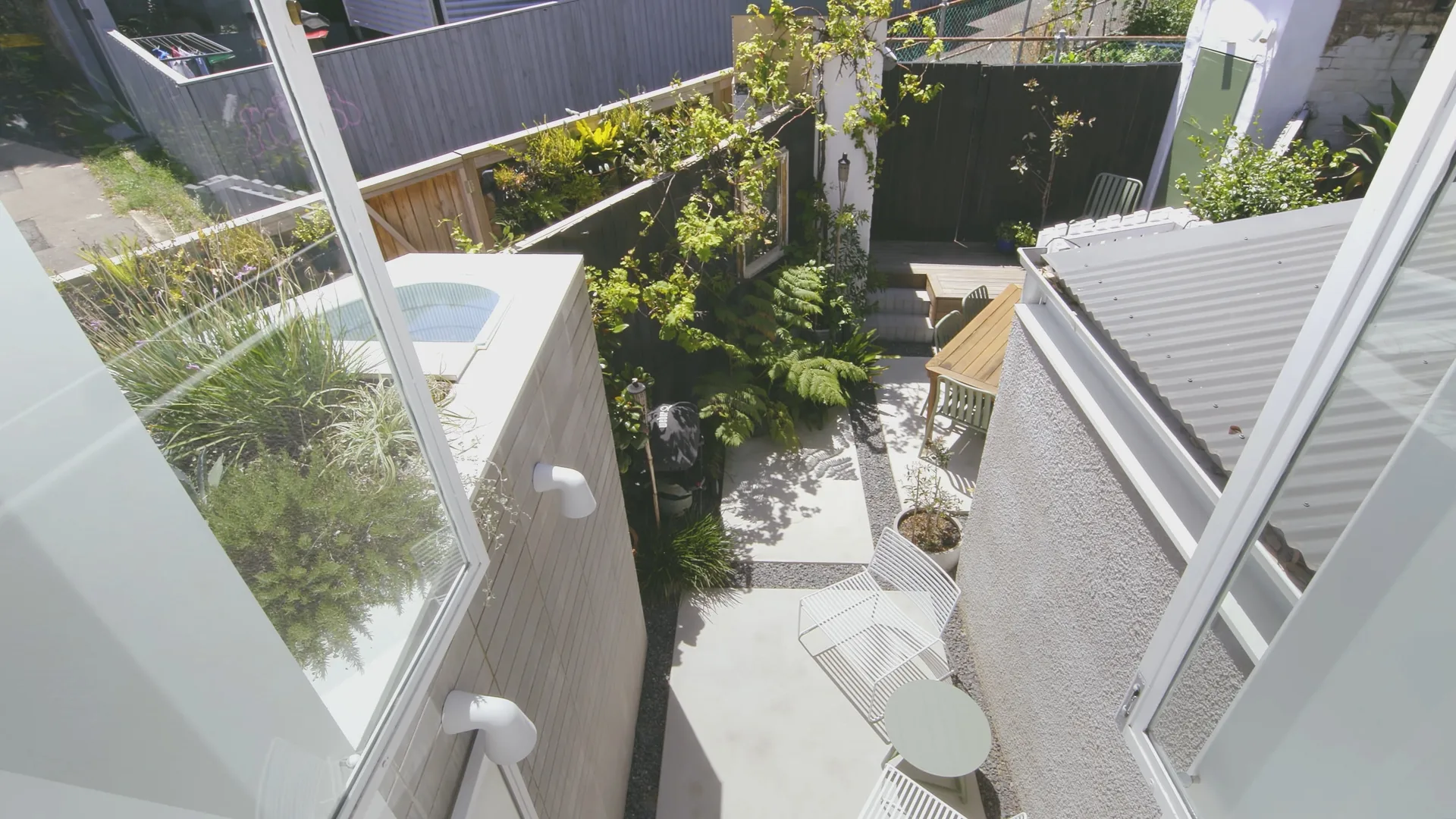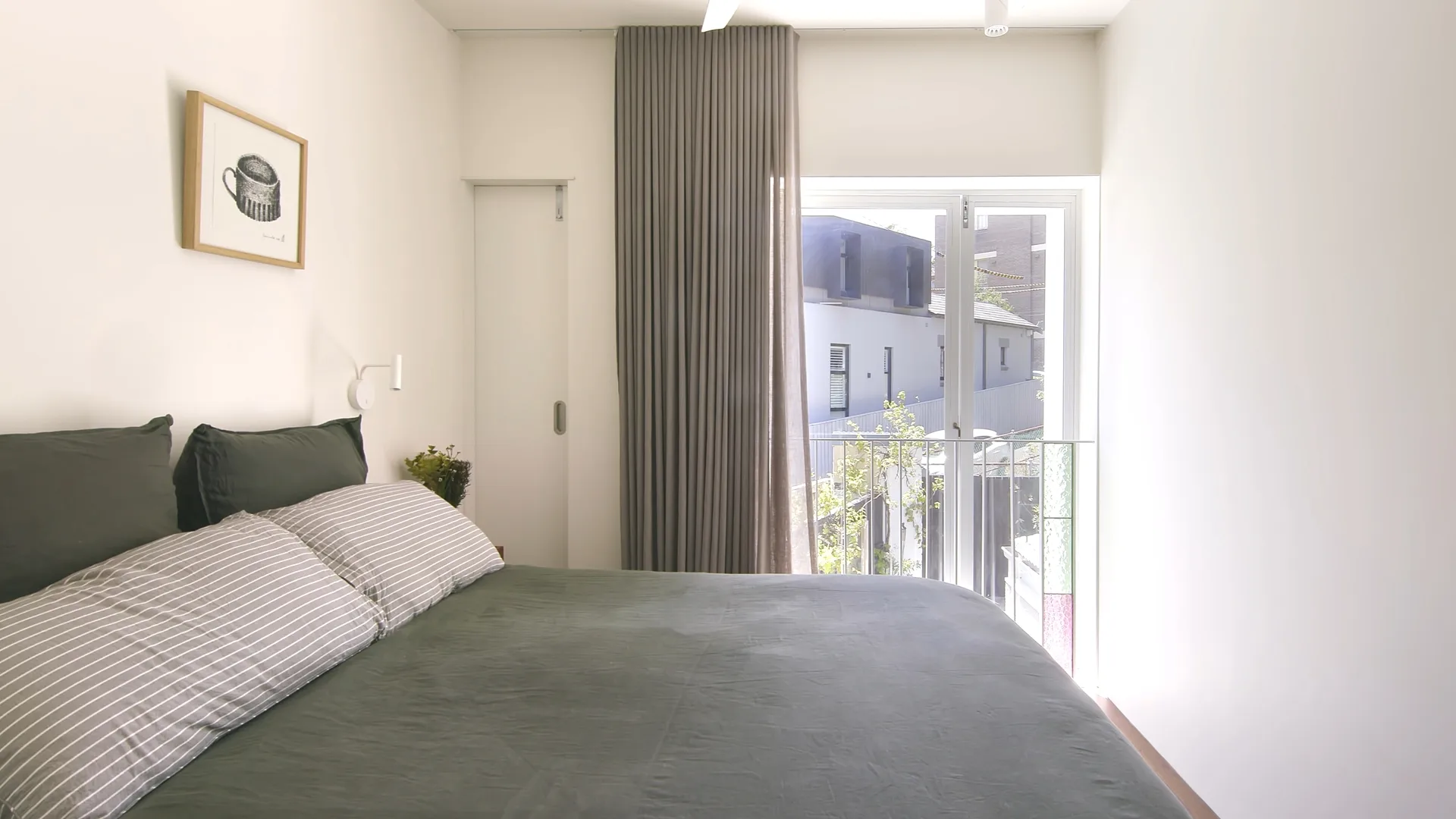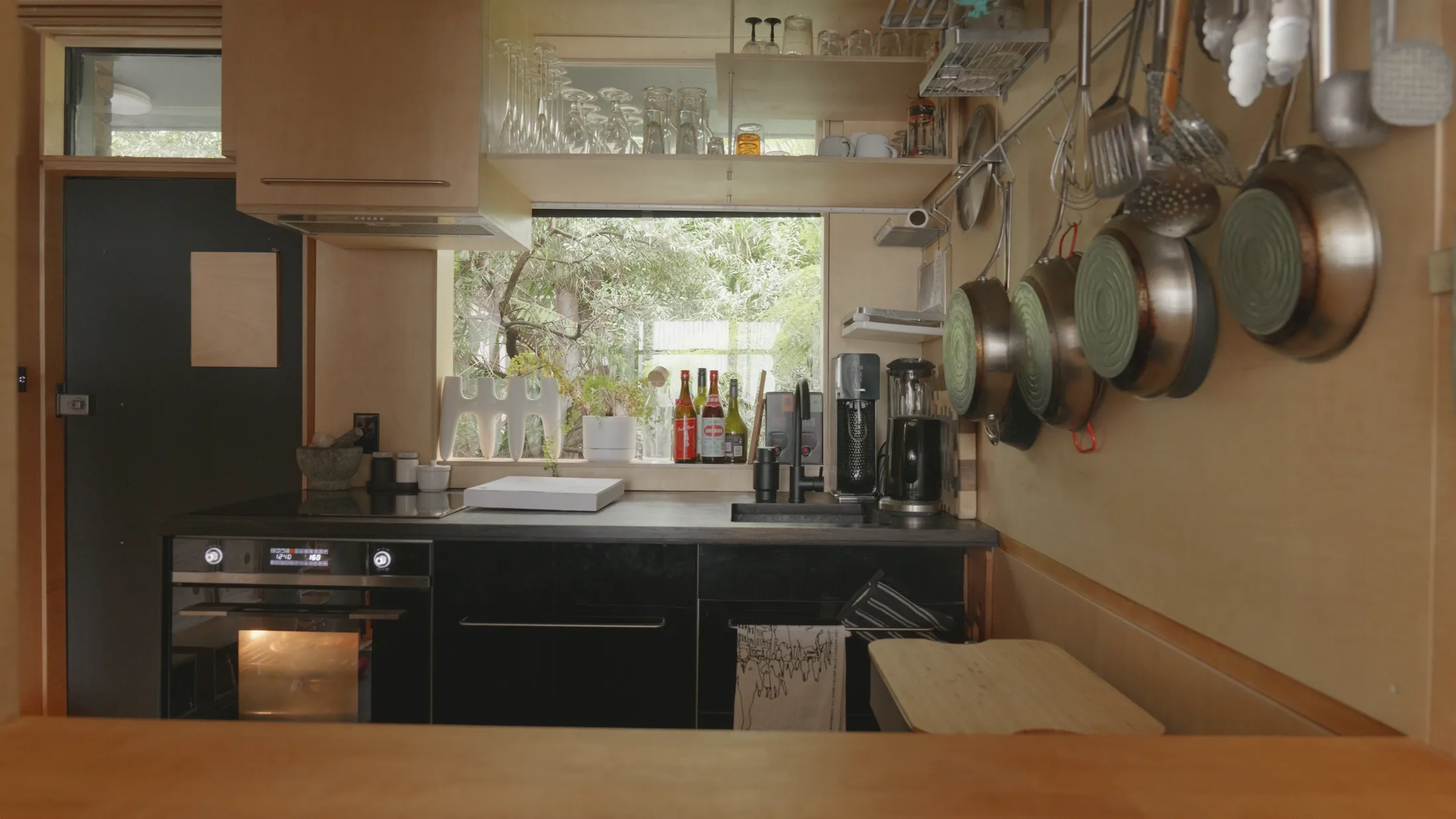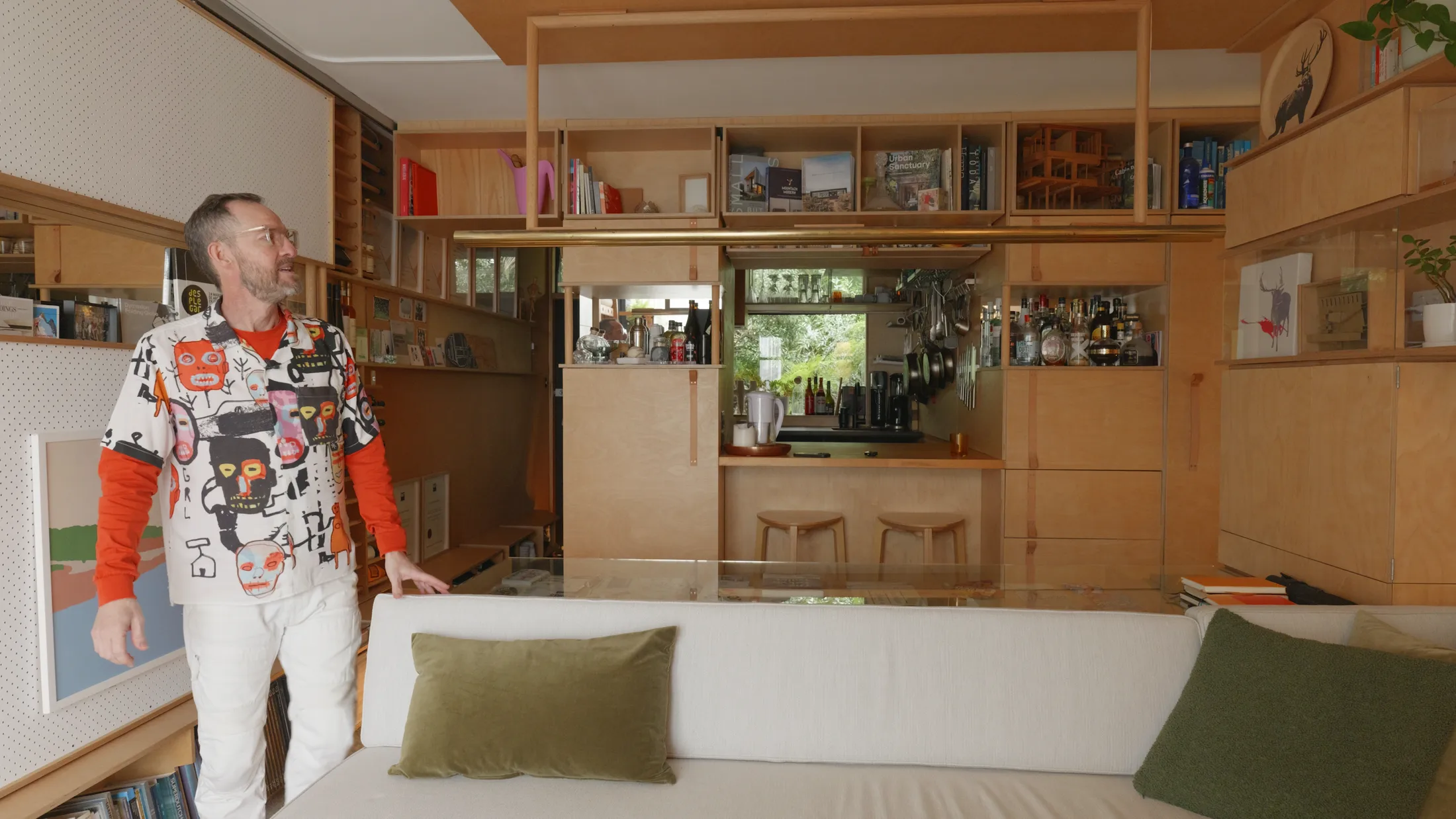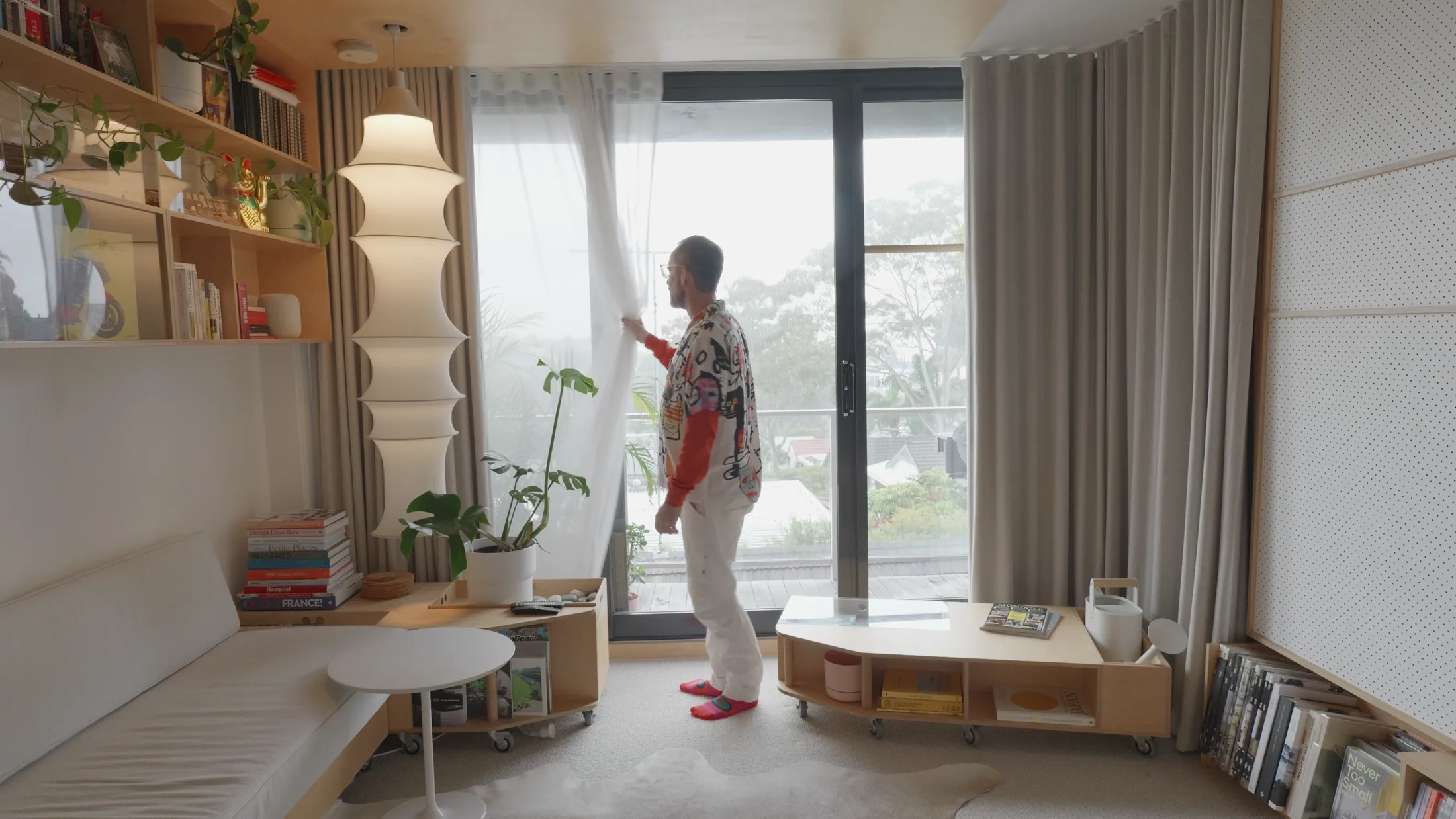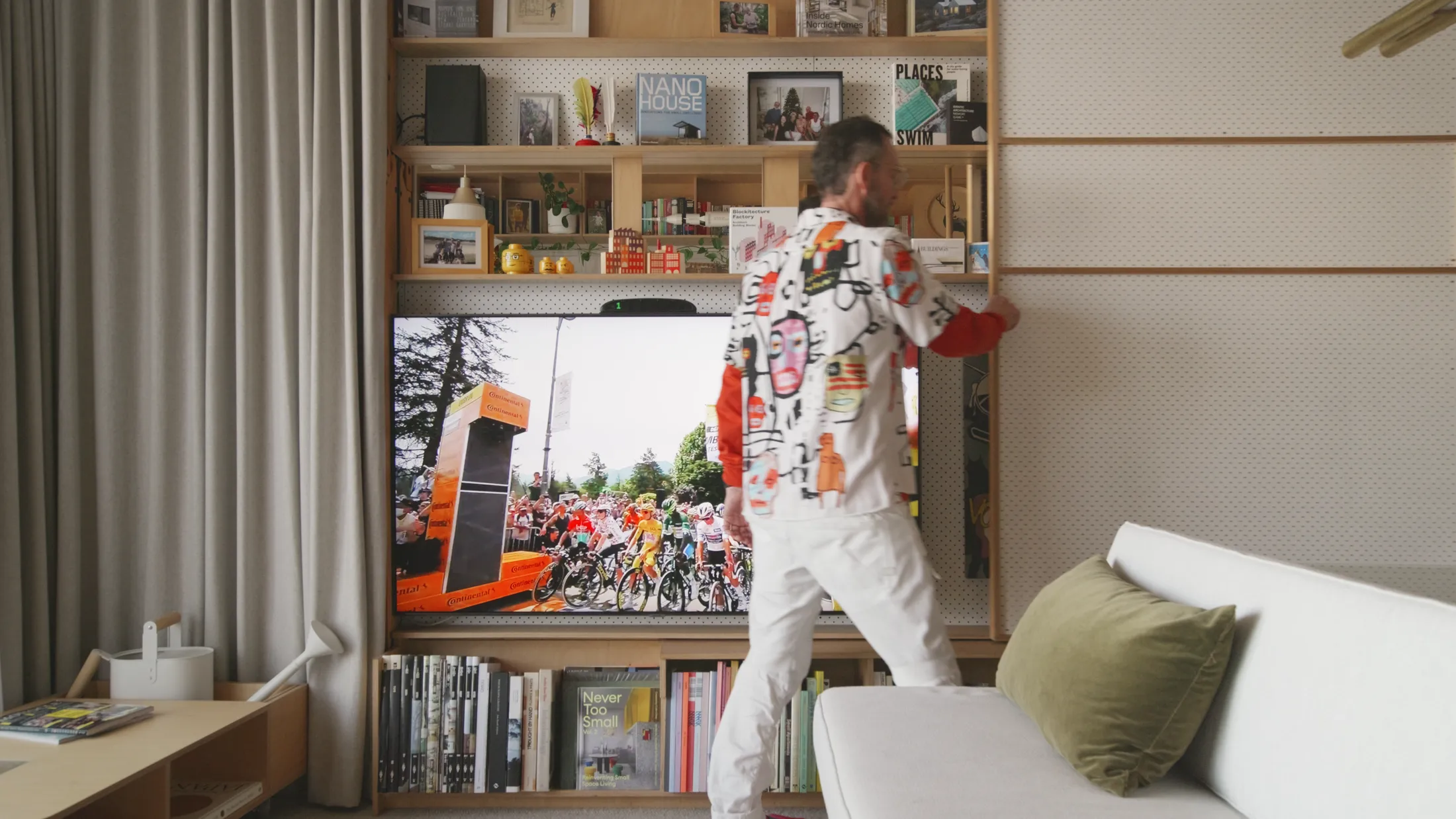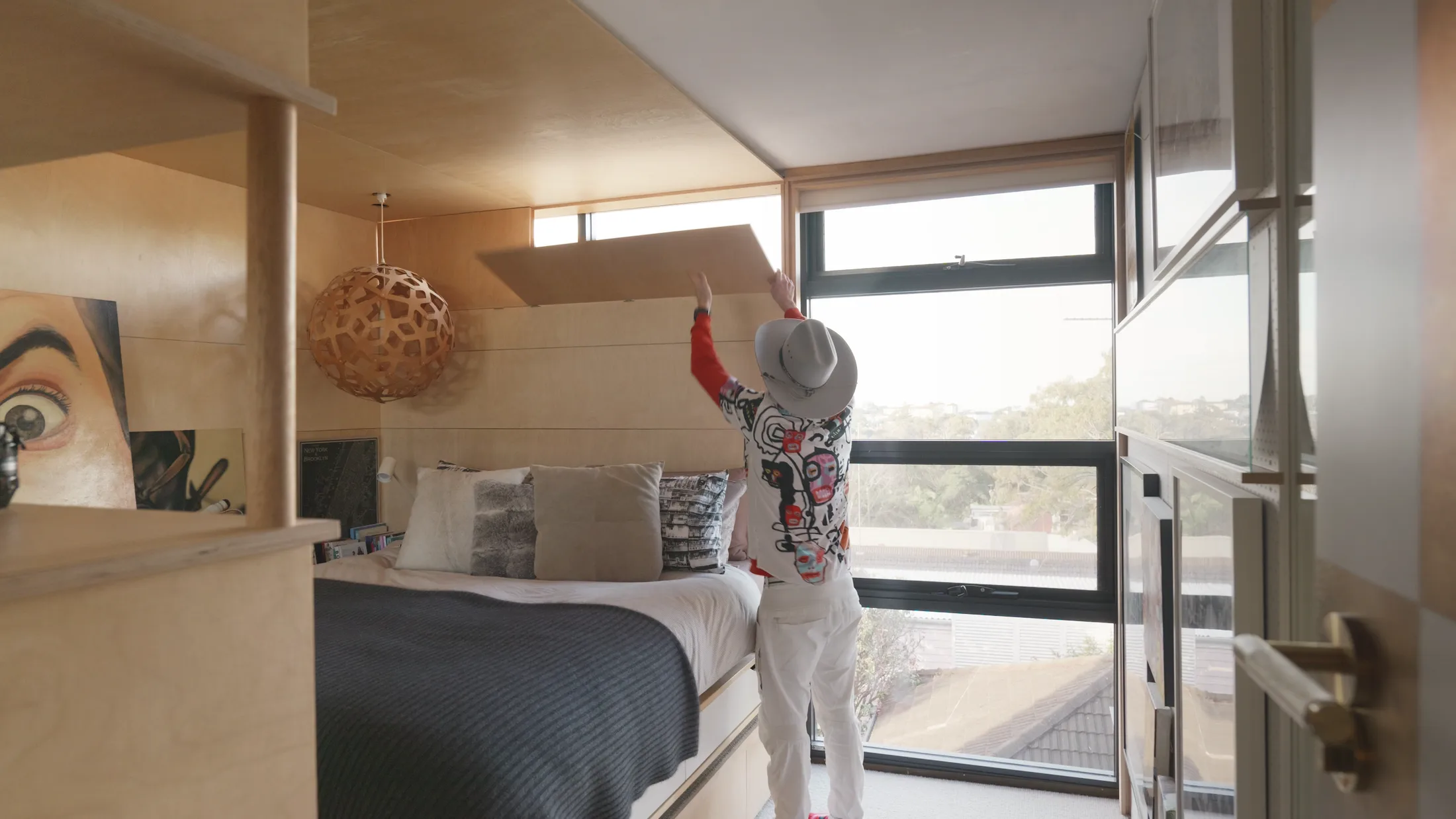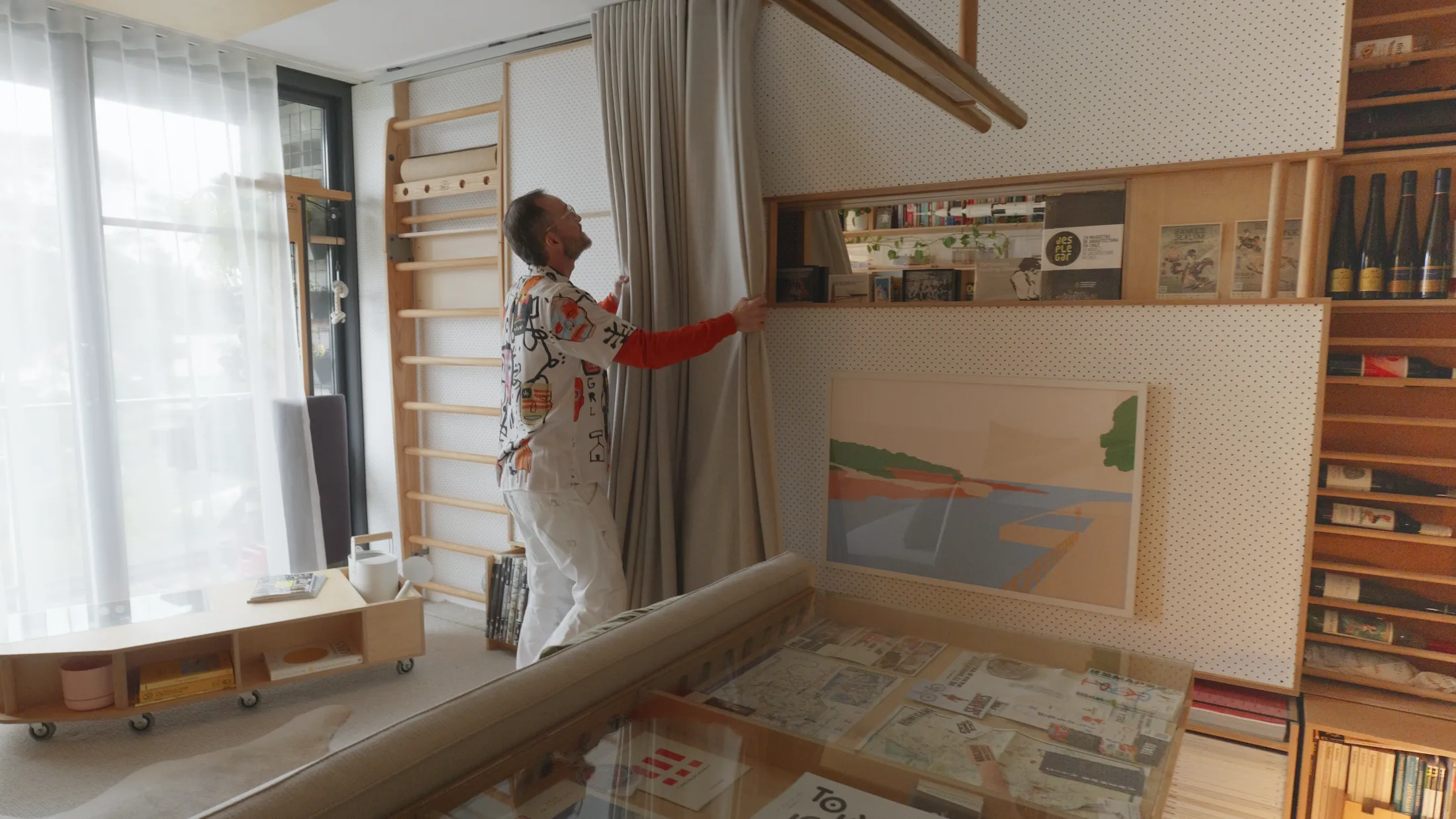Sydney is a city that always seems to be outdoors. From beaches and harbour ferries to leafy neighbourhood pubs, it thrives on sunshine and vibrancy. Sydney’s homes are as varied as its neighbourhoods – from compact workers’ cottages to breezy beachside apartments. With the highest house prices in Australia, the city has become a testing ground for small-space innovation. There’s no better time to showcase some of our most loved Sydney homes – all ingenious, all tiny in stature, and enormous in creativity and ambition.
Convict Cottage – 59sqm/635sqft
Convict Cottage has, as one might imagine, a colourful past. Built by inmates of the local jail to house wardens in 1849, the Darlinghurst terrace home went through many iterations before it landed in the talented hands of its current owner, Sam Eggleton. As the founder of Sydney-based Convict Interiors, he transformed the once dark and awkward space into his bright and breezy home and office.
To honour the home’s history, Eggleton worked with traditional materials in a tonal palette, layering in California Modern influences, playful colour, and small but impactful layout changes. Highlights include enlarged skylights that capture the northern light, a vaulted upper ceiling with Juliet balcony that opens the bedroom to the outdoors, and a courtyard that Eggleton uses year-round as an extension of the living space. Throughout, he searched for ways to maximise natural light. “You can’t change the direction of the sun,” Eggleton says, “so capturing as much light as you can is so important in making the space feel bright and breezy.”


